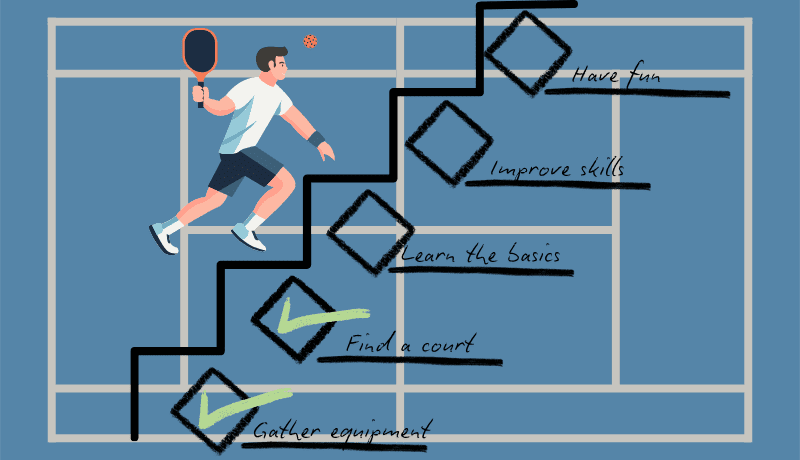Checklist tree for whole-company processes
Not every process can be expressed with a checklist, but many can. But what if the process is multifaceted and goes through the entire organization? In this case, a tree of checklists can help.

Checklists are good for visualizing the organization's processes. Not every process can be expressed as a checklist, but many of them can. There are, however, multi-stage processes, and they might look scary. Where are we going with our checkboxes in a serious business?! However, the checklist has something to show in this case as well. If speaking precisely, not a single checklist, but a group of them.
Let's imagine a fictional organization “A” with the following structure:
A
┌──────────┼──────────┬─────┐
Production Accounting Marketing HRIn a functioning organization, hiring usually takes place, and occasionally, someone leaves. Let's imagine that our organization “A” decides to streamline the process of onboarding the newcomers. We are tired of the chaos and the associated problems. The HR department is assigned to develop a checklist. They cope well with the task.
There are fewer errors, but they are still far from being eliminated. Where are the remaining concerns? Each of the departments has its specifics of work, its tools that beginners need to learn. There is hardly any point in trying to create a universal checklist for the entire company. Nevertheless, creating a second level of checklists for beginners makes practical sense. Let's assume that the heads of the respective departments are responsible for creating them. Let's assume that they've coped with their task.
Now the structure of checklists for adapting newcomers completely repeats the organizational structure. There is a general checklist for organization “A”, and there is a specific checklist for a specific department.
If, for example, we have a newbie in accounting, their onboarding will be carried out by applying two consecutive checklists:
- The checklist for onboarding to Organization “A”.
- The checklist for onboarding to the accounting department.
It appears that everything is apparent. Let's take a closer look at the production process. If we have a complex production, then it probably has stages that are responsible for different steps of the production process.
Production
├─ Sub-department #1
├─ Sub-department #2
├─ Sub-department #3
└─ Sub-department #4How do we approach onboarding in sub-departments? Just like before. In other words, a novice's path to production sub-department # 2 will be as follows:
- The checklist for onboarding to Organization “A”.
- The checklist for onboarding to the production department.
- The checklist for onboarding to the sub-department #2.
What should we do if we want to scale production? That is, how to approach the next organizational structure?
Production
├─┬ Line #1
│ ├─ Sub-department #1
│ ├─ Sub-department #2
│ ├─ Sub-department #3
│ └─ Sub-department #4
│
└─┬ Line #2
├─ Sub-department #1
├─ Sub-department #2
├─ Sub-department #3
└─ Sub-department #4You can, of course, we can try to develop four levels of checklists, but do we really want to do this? Do we think that practices in sub-department #4 on the second line are so different from the practices of sub-department #4 on the first line that it is necessary to consolidate their difference? Or are we interested in the constancy of both?
If you want consistency on both the first and second production lines, then the fourth level of checklists is not required.
Why is the checklist tree mentioned in the title? If we combine all possible ways of passing the checklists into one general scheme, we will get something similar to the production structure. Take a look, here CL means “checklist”:
CL of A
├─┬ CL of Production
│ ├─ CL of Sub-department #1
│ ├─ CL of Sub-department #2
│ ├─ CL of Sub-department #3
│ └─ CL of Sub-department #4
├── CL of Accounting
├── CL of Marketing
└── CL of HRWell, it looks like our tree grows to the right down from a steep cliff, but this also happens in the real world.
Have we gained something more by developing such a fine-grained structure for smoother onboarding of employees in our “A” organization? Yes, we have received a ready-made scheme for developing a similar process for leaving the organization, for the offboarding. However, it is quite likely that it will no longer unfold from “A” and into the depths, but from the depths and to “A”.



